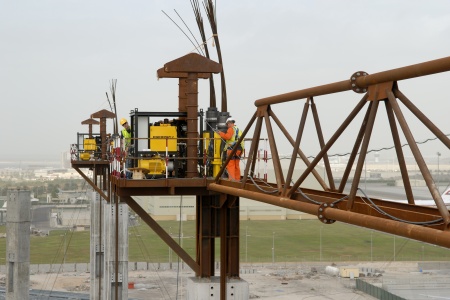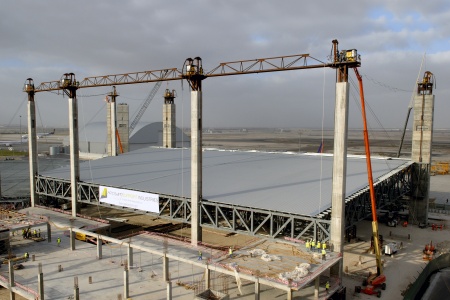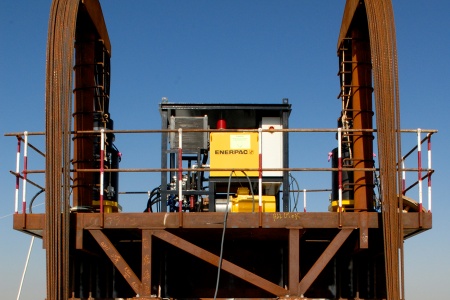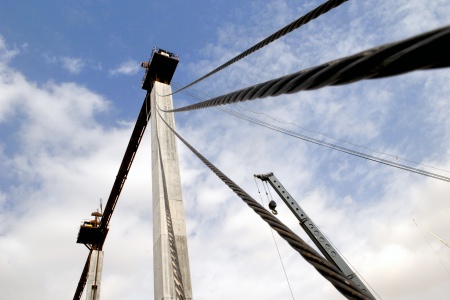Abu Dhabi Airport Hangar: Heavy lifting of 2000 ton steel roofs
Location:Abu Dhabi, UAE
At Abu Dhabi Airport, United Arab Emirates, 3 enormous steel roofs, 2000 ton each, constructed at ground level were lifted 131 feet (40 meters), using Enerpac HSL-Series strand jacks, creating aircraft maintenance hangers. The strand jack system managed by a single operator using the Smart Cylinder Control (SCC) system, delivers confidence by providing complete understanding of the lift operation from a central position.
Enerpac won a challenging and rewarding order from ASI (an Australian based company) for the Abu Dhabi Airport Hangar project. The triple bay hangars are specially designed to be big enough and high enough to house the new Airbus A380 planes. This was a fantastic effort by a team, who worked day and night to meet all deadlines.
Team members emphasized Enerpac’s strengths and business reputation to convince ASI that Enerpac had the expertise and product offering to ensure a successful outcome. ASI was impressed by Enerpac's diligence and professionalism.
Aircraft Maintenance Hangars
Abu Dhabi Aircraft Technologies (ADAT)
Facility : Hangar 6, 3 bay A380 Airbus, For heavy maintenance
Size : Hangar floor area of 344.45ft2 (32m2); Offices, workshops 129.17ft2 (12m2)
Span : 2x 360x348 feet (110x106 meters); 1x 377x348 feet (115x106 meters)
Project : Started in 2009; Ready in January 2011
The roof structures were designed to accommodate the imposed loads of overhead cranes, teleplatforms and suspended docking systems. The hangar floors have service pits for utilities including mains power, 400Hz, compressed air, mass airflow, preconditioned air, fuel exhaust and water. The pits were located to minimize the extent of cables, pipes and equipment etc on the hangar floor thereby increasing maintenance efficiency whilst improving occupational health and safety.
Year2011




